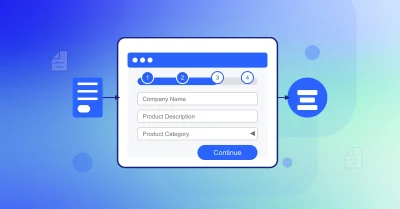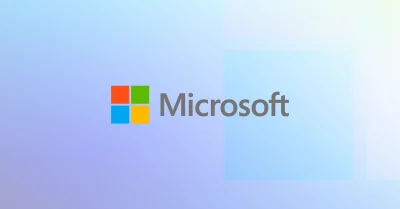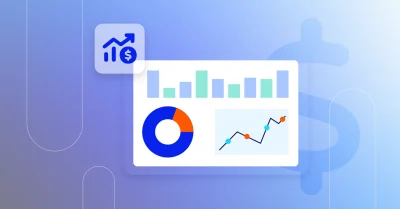Popular consensus is that within five years current business models will be upended by the drive to build and command what we might call the “ecosystem advantage.” The innovators among us already describe an ecosystem-driven, interconnected economy where customers demand from providers more integrated bundled solutions and far fewer standalone products. They would also point to McKinsey research showing that seven out of ten consumers value ecosystem offerings that simplify the purchase journey.
Those thriving in five years’ time, analysts say, will be the businesses that today grasp the value of an ecosystem-driven approach and that already have or are busy building that next-generation ecosystem. The most successful companies will be those that fully understand (and overcome) the obstacles to creating and managing an effective ecosystem. They will have the ability to recognize the absolute importance of a superb end-to-end digital experience that allows customers to access a wide range of products and services through a single access gateway.
Let’s take a look into that near future and the power of the ecosystem, what challenges lie ahead in orchestrating an ecosystem effectively and how CloudBlue can be invaluable in assisting you to achieve your ecosystem advantage.
The exponential value of the ecosystem
The power of the ecosystem-driven model lies in its ability to exponentially multiply the value and utility that your business has to offer to your customers without incurring the exponential costs of doing so. It adds this value principally in two ways.
First, it allows you to access customers across market segments and industries that would be otherwise out of reach. Second, at the very same time, ecosystems create value by vastly improving your customer journey with capabilities outside your core. As a result, you can capitalize on your partners’ capacity to enhance the customer experience. If you operate a commerce engine, for example, a partner with an artificial intelligence chat bot can significantly improve the pre-sale or post-sale experience for customers using your solution.
By effectively orchestrating your ecosystem, partnerships unlock distributed innovation and enable new revenue-generation streams for you and your entire network. Because a network of partners can offer products and services beyond that of a single company, a well-managed ecosystem can generate a sort of positive feedback loop. In short, you achieve a competitive advantage that would be unattainable alone.
It’s no wonder, then, that studies from McKinsey illustrate how at least a dozen sectors in both B2B and B2C, including mobility, travel and hospitality, health and housing, are already in the midst of reinventing themselves as vast ecosystems—as networks of networks that could by 2025 compose a $60 trillion dollar integrated network economy. And for those that are slow to build their own ecosystem, or form a part of another’s, it’s clear the relative size of their accessible market will soon get much smaller.
What stands in your way: Ecosystem challenges
The remarkable competitive advantage promised by the ecosystem model does, however, come with a caveat. Regardless of their potential synergies, the network of reusable modules and apps can only be leveraged by businesses if they’re locatable on an effectively orchestrated marketplace. And the marketplace a business manages will only generate exponential value if ecosystem players have the tools to tackle and overcome common challenges that may arise within marketplace sales.
There are five major challenges in navigating this hidden world of value within an ecosystem of marketplaces:
- Visibility – how the IP owner market the company’s product or service.
- Search – how to enable buyers to easily find what they need.
- Integration – how to bring together the technical, business and commercial sides, enabling publishers and customers to efficiently transact with one another. Peer-to-peer integration, a typical route, is both difficult and costly to build and maintain, and also slow to market from an IT and contractual perspective.
- Monetization model – how to identify the correct model geared towards generating revenue from resale or driving demand for a flagship offering.
- Enablement – how to ensure your customer is successful using your products and services, and tapping into your ecosystem.
Where CloudBlue comes in, streamlining distribution
CloudBlue came to life as an answer to these obstacles. In our mission to be the facilitator of infinite ecosystems, CloudBlue built a single platform for orchestrating ecosystems and managing the digital supply chains—both by aggregating the upstream (the suppliers) and the downstream (the channels).
On the upstream supply side, our platform supports efficient product onboarding, a self-service configuration for catalog management and supplier ecosystem orchestration. It facilitates contractual and legal enablement for members, products and offering definition, order management, fulfillment and provisioning, sales enablement and more.
On the other end of the digital supply chain, on the downstream side, CloudBlue powers the aggregation of the go-to-market ecosystem. Using our platform, your cloud platform becomes a single point of entry into your entire go-to-market network, carrying all offerings from your portfolio to your customers regardless of your channel structure. In one place, and through one gateway, CloudBlue allows you to manage your direct sales to both B2B and B2C customers, as well as your resellers, distributors, system integrators, agents and affiliates.
The culmination of years of accumulated expertise and millions invested in cutting-edge tools for navigating evolving avenues of growth, CloudBlue brings customers an unparalleled set of tools to keep them at the forefront of ecosystem orchestration. At a time when older business models are quickly becoming obsolete, it’s a platform that enables you to take every advantage of what’s coming.
To learn more, check out CloudBlue Executive Director Darek Tasak’s recent session, Delivering the Digitally Connected Ecosystem, from this year’s CloudBlue Innovators Virtual Forum event.












